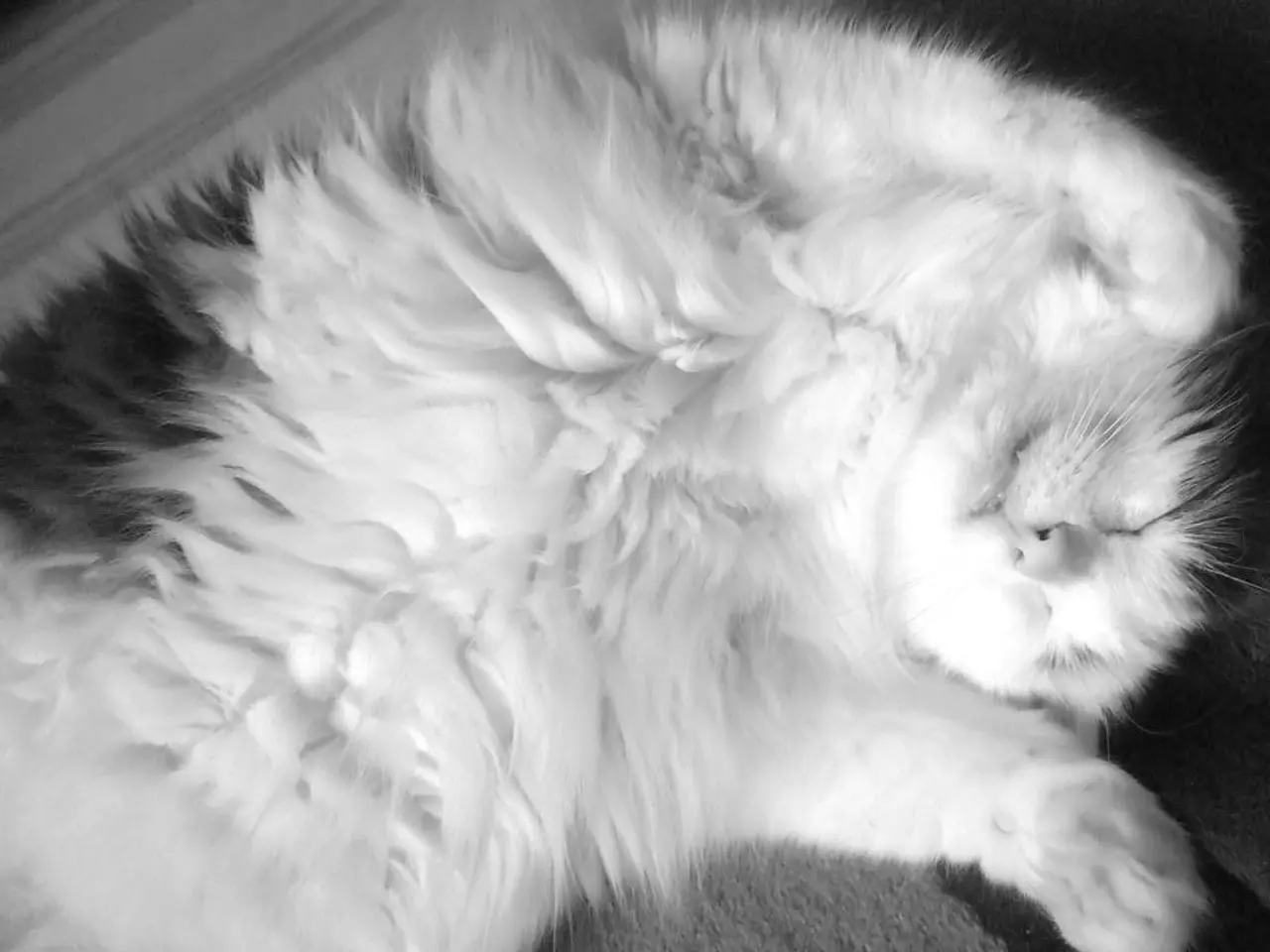Cat Vomiting White Foam: A Veterinary Discussion
Managing White Foamy Cat Vomit: A Guide for Cat Owners
White foamy vomit in cats can be a cause for concern, but understanding its potential causes and how to address it can help ensure your feline friend's health.
Understanding the Causes
White foamy vomit can be a sign of stomach irritation, an empty stomach, dietary issues, infections, inflammatory conditions such as Inflammatory Bowel Disease (IBD), and other less common causes like intestinal obstructions, neurological disorders, or metabolic/hormonal imbalances.
Stomach irritation might be due to gastritis, infections, or allergies. An empty stomach can also cause cats to vomit white foam, as it consists mainly of mucus and bile. Food intolerances or allergies can lead to chronic vomiting with foam due to inflammation. IBD is a chronic condition causing persistent vomiting due to intestinal inflammation.
Addressing White Foamy Vomit
If your cat is vomiting white foam, it's essential to monitor the frequency and check for other signs such as lethargy, appetite changes, diarrhea, or weight loss. These symptoms indicate more serious issues that require veterinary attention.
Adjusting feeding habits can also help. Feeding smaller, more frequent meals can help prevent an empty stomach, reducing foam vomit episodes. If vomiting persists or other symptoms develop, seeking veterinary attention is crucial to rule out infections, allergies, IBD, or obstructions.
Managing allergies or diet is also important. Identifying and eliminating allergenic foods can reduce vomiting if allergies are confirmed.
Preventative Measures
Environmental management is crucial in preventing vomiting. Cat-proofing your home to prevent accidental ingestion of foreign objects and toxins can help. For cats prone to hairballs, regular grooming and hairball control products can help reduce vomiting frequency.
When to Seek Help
Occasional cat vomiting should not be a cause for alarm, but persistent vomiting (more than 1-2 times a week) requires veterinary attention. Vomiting accompanied by additional symptoms (diarrhea, constipation, lethargy, poor appetite, weight loss, increased drinking or changes in urination) is an emergency and should be addressed immediately.
In summary, white foamy vomit usually points to stomach irritation or an empty stomach but can be a sign of more serious illness if persistent. Careful observation and timely veterinary consultation are essential for proper diagnosis and treatment. If you have any concerns, consult your veterinarian for a thorough evaluation and personalized care plan.
Mental-health concerns related to cat ownership can arise from the stress of managing health issues in pets, such as white foamy vomit, as it can be a sign of various conditions that require immediate attention.
Science plays a crucial role in understanding the causes and possible treatments for white foamy cat vomit, as it helps identify potential causes like stomach irritation, dietary issues, or Inflammatory Bowel Disease (IBD). Lifestyle modifications, such as adjusting feeding habits, and preventative measures, like environmental management, can help manage this health-and-wellness issue effectively. If symptoms persist or worsen, pets may benefit from pet-focused health-and-wellness services or medication, such as those provided by veterinarians.




